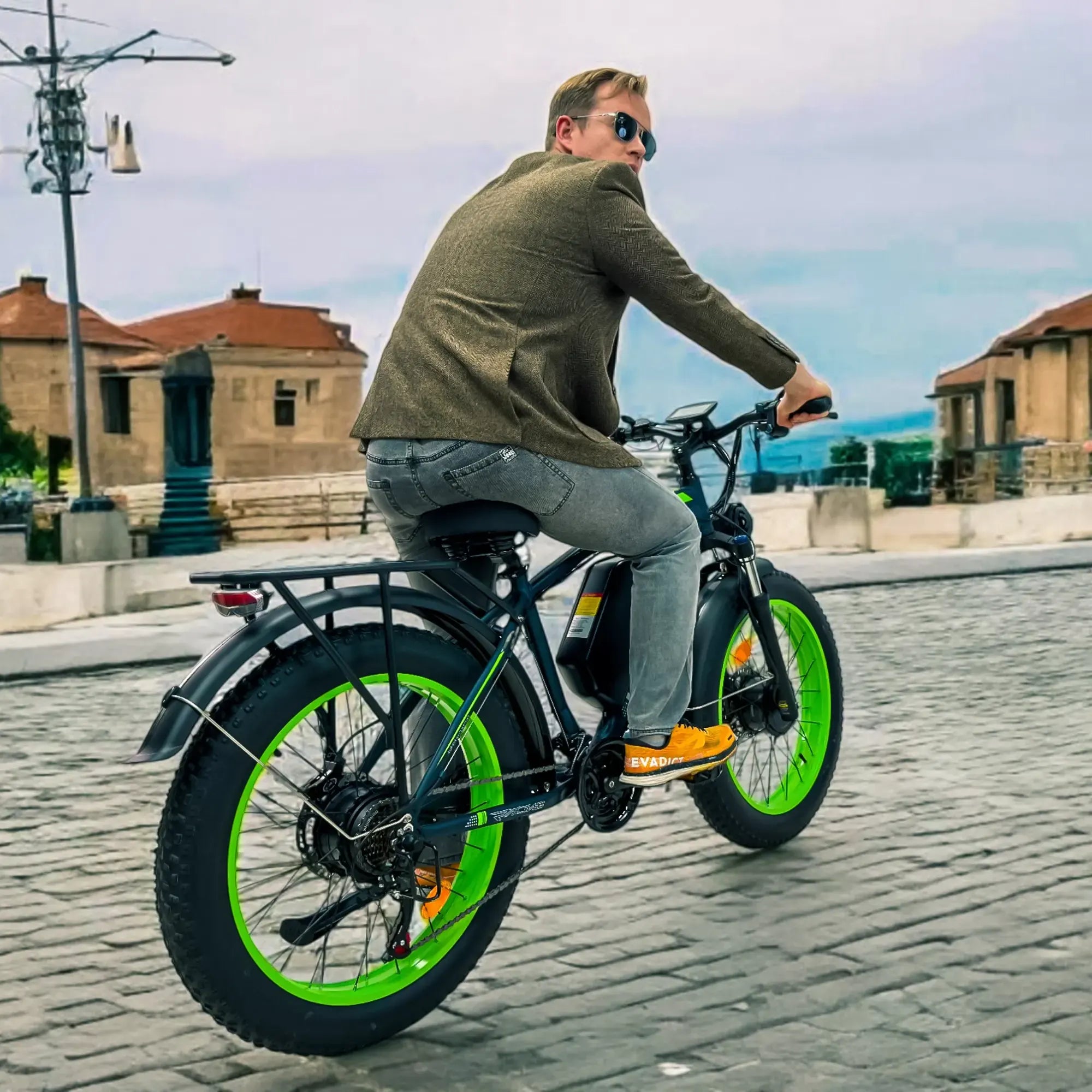The ebike controller is considered to be the brain of your electric bike system. It controls the flow of power between the battery and the motor. A lot of riders think they need professional help when this important part breaks. But if you have the right tools and knowledge, you can completely replace an ebike controller at home.
The Electric Bike Association reports that controller failures make up about 23% of all electrical problems with e-bikes. The good news? You can save 60–80% on repair costs by doing the replacement yourself. So, if you’re an e-bike enthusiast, this DIY guide is for you.
What is an E-Bike Motor Controller?
The motor controller for your e-bike is its power system. This electronic device controls how much electricity flows from your battery to the motor, which affects speed, torque, and overall performance.
The modern ebike controller processes signals from a number of parts, such as the throttle, pedal-assist sensor, brake levers, and display unit. They change the DC power from the battery into the right voltage and current for your motor.
Key Functions of an E-Bike Controller
- Power regulation and distribution
- Speed control and throttle response
- Pedal-assist level management
- Battery protection and monitoring
- Regenerative braking coordination
- Error detection and safety shutoff
Signs Your E-Bike Controller Needs Replacement
If you can spot the signs of a controller failure early, you can stop your e-bike's electrical system from getting worse. These are the most common signs:
Electrical Performance Issues
Motor Inconsistency: Your ebike may produce irregular power output, causing jerky acceleration or sudden power cuts during rides.
Display Malfunctions: Error codes appearing on your e-bike display often indicate controller communication problems. Depending on your system, common codes are E01, E02, or E05.
Issues with the Battery Connection: Inaccurate charge level readings could result from an ebike controller malfunctioning, which would make it difficult to maintain appropriate battery communication.
- Physical Indications of Damage to the Controller
- The controller housing has a burnt smell.
- Connector pin corrosion that is visible
- Damaged or loose wiring connections
- Damage or cracks in the controller housing
Regular inspection is essential because water damage or connection corrosion account for 78% of controller failures, according to research from the International E-Bike Safety Institute.
Equipment and Supplies Required to Replace the Controller
- Crucial Equipment
- Phillips head screwdriver set
- A screwdriver with a flat head
- Strippers of wire
- Electrical tape
- Cable ties for multimeters
- Heat-shrinkable tubing
If necessary, a soldering iron
- Safety Gear
- Safety goggles
- Gloves with insulation
- A clean surface or work mat
- Adequate illumination
- Replacement Components
Verify that the new e-bike controller you select is compatible with your current battery and motor. 36V or 48V ebike controllers are used by the majority of e-bikes. The current ratings typically fall between 15A and 25A.
The Step-by-Step Guide to Replace Your E-Bike Motor Controller
Step 1: Safety and Preparation
Before you begin working on your e-bike's speed controller, make sure your bike is completely off and the battery is disconnected.
Step 2: Locate and Access the Controller
Most ebike controllers are mounted either:
- Inside the mainframe triangle
- On the rear rack or carrier
- Within a controller box near the motor
- Behind the battery compartment
To get to the controller, take off any protective covers or panels. Before you disconnect anything, take pictures of how the wiring is set up now. This will help you remember how to put it back together.
Step 3: Document the Wiring Configuration
Making your own wiring diagram for an ebike controller is very important if you want to replace it successfully. These are the most common connections for controllers:
Power Connections:
- Battery positive (red wire)
- Battery negative (black wire)
- Motor phase wires (usually blue, green, yellow)
Signal Connections:
- Throttle input
- Pedal-assist sensor
- Brake sensor inputs
- Display communication cables
Step 4: Remove the Old Controller
Take care to unplug each wire connector from the old ebike motor controller. Take your time and remove one connection at a time while looking at your pictures.
Some connectors may need a little wiggling or pressing of the release tabs. Don't force connections because this can break the wires or connectors.
Take off the controller's mounting screws after all of the connections are gone. Most of the time, controllers are held in place with two to four screws or bolts.
Step 5: Install the New Controller
Put your new ebike controller in the same place as the old one. Make sure all of the mounting bolts are tight, but don't over-tighten them because that can crack the controller housing.
Start reconnecting the wires according to the instructions you have. First, connect the power wires, and then the signal wires.
Step 6: Test the Installation
Before final assembly, perform a comprehensive test of your new controller installation:
- Reconnect the battery
- Turn on the e-bike system
- Check the display for error codes
- Test throttle response
- Verify pedal-assist functionality
- Test brake sensor operation
If everything is working right, go ahead and put the final pieces together. If problems happen, go over all of your wiring documentation again to make sure everything is connected correctly.
Controller Compatibility and Selection Guide
Voltage Matching
Your new ebike controller must match your battery voltage. Common configurations include:
- 36V Systems: Suitable for casual riding and moderate speeds
- 48V ebike controller: Provides higher performance and speed capabilities
- 52V Systems: High-performance applications
Current Rating Considerations
The controller's current rating determines maximum power output. Higher amperage controllers provide:
- Increased acceleration
- Better hill-climbing ability
- Higher top speeds
- Greater power consumption
Most recreational e-bikes use 15A to 20A controllers, while performance bikes may require 25A or higher ratings.
Brand-Specific Considerations
Some companies make their own systems that need special controllers. For example, Bosch ebike controllers work with their whole drive system and may need to be programmed by a dealer.
Most hub motor systems can use generic controllers, but they might not have advanced features like regenerative braking or advanced display integration.
Troubleshooting Common Installation Issues
Connection Problems
Loose Connections: Ensure all connectors are fully seated and locked. Loose connections cause intermittent operation and potential damage.
Incorrect Wiring: Double-check your ebike controller wiring diagram against the actual connections. Reversed polarity can damage the controller or motor.
Performance Issues
Reduced Power: If your e-bike feels sluggish after controller replacement, verify the current rating matches your original specifications.
Erratic Operation: Inconsistent performance often indicates signal wire connection issues. Check throttle and sensor connections carefully.
Display Communication
Modern e-bikes rely on communication between the controller for ebike and the display unit. Communication protocol mismatches can cause display errors or limited functionality.
Maintenance Tips for Long Controller Life
Environmental Protection
Controllers are sensitive to moisture and extreme temperatures. Ensure proper sealing and ventilation around the controller mounting area.
Regular Inspections
Check connections monthly for corrosion or looseness. Clean connectors with contact cleaner and apply dielectric grease to prevent corrosion.
Software Updates
Some advanced controllers support firmware updates that improve performance and compatibility. Check manufacturer websites for available updates.
Cost Analysis
DIY Replacement Costs
- Controller unit: $50-$200
- Basic tools: $30-$50
- Total investment: $80-$250
Professional Service Costs
- Parts: $50-$200
- Labor: $100-$300
- Total cost: $150-$500
DIY replacement typically saves 40-60% compared to professional service, making it an attractive option for technically inclined riders.
Safety Considerations and Best Practices
Electrical Safety
Always work with the battery disconnected and use insulated tools. E-bike systems operate at voltages that can cause injury if mishandled.
Proper Disposal
Dispose of old controllers according to local electronic waste regulations. Many components contain materials that require special handling.
Testing Protocols
Never skip the testing phase. A properly functioning ebike speed controller ensures safe operation and prevents potential accidents.
Conclusion
You can save a lot of money and learn a lot about your e-bike's electrical system by replacing the controller yourself at home. Most riders can do this repair successfully if they get ready, write down what they need to do, and pay close attention to safety.
Keep in mind that replacing an ebike controller takes time and careful attention to detail. Take your time with each step, write down everything in detail, and don't be afraid to get professional help if you run into problems you didn't expect.











Share:
Complete Guide to E Scooters with Seats: Comfort, Range And So on
How to Transport a Fat Tire E-Bike Safely: Car, Truck, and Public Transit Options